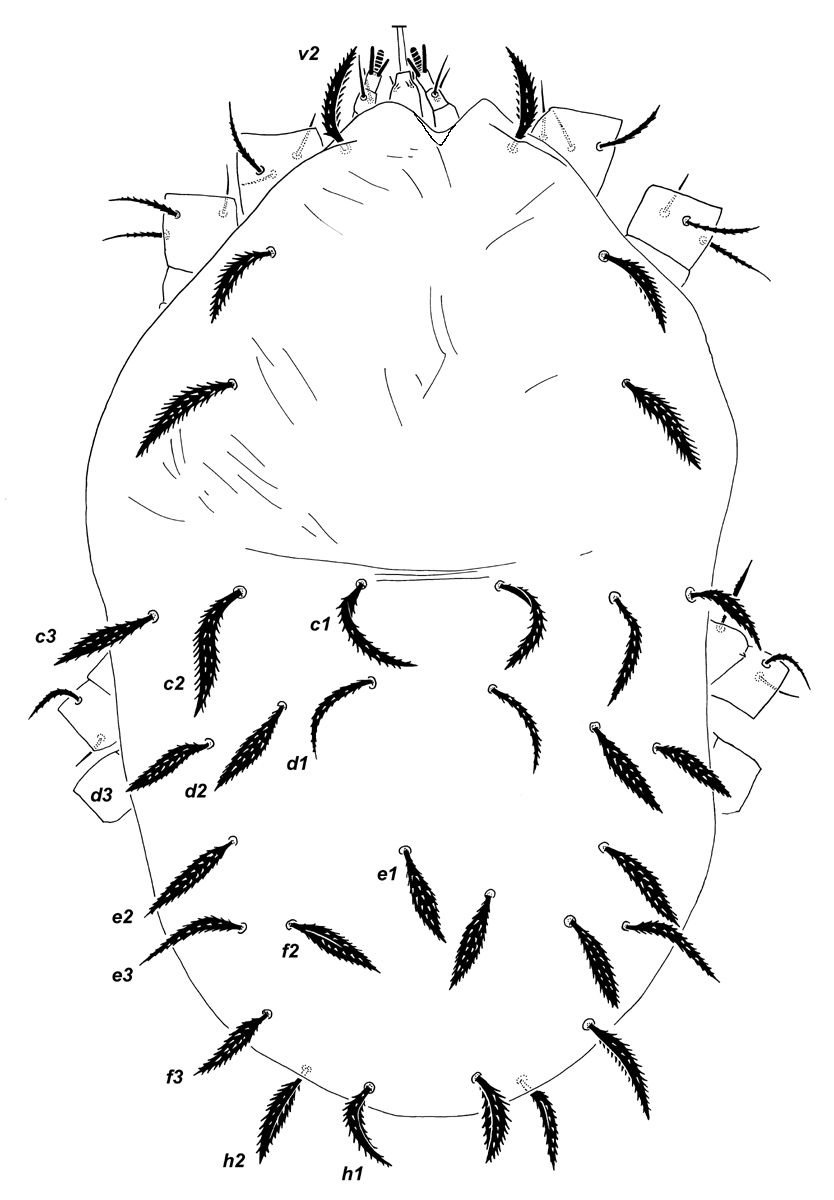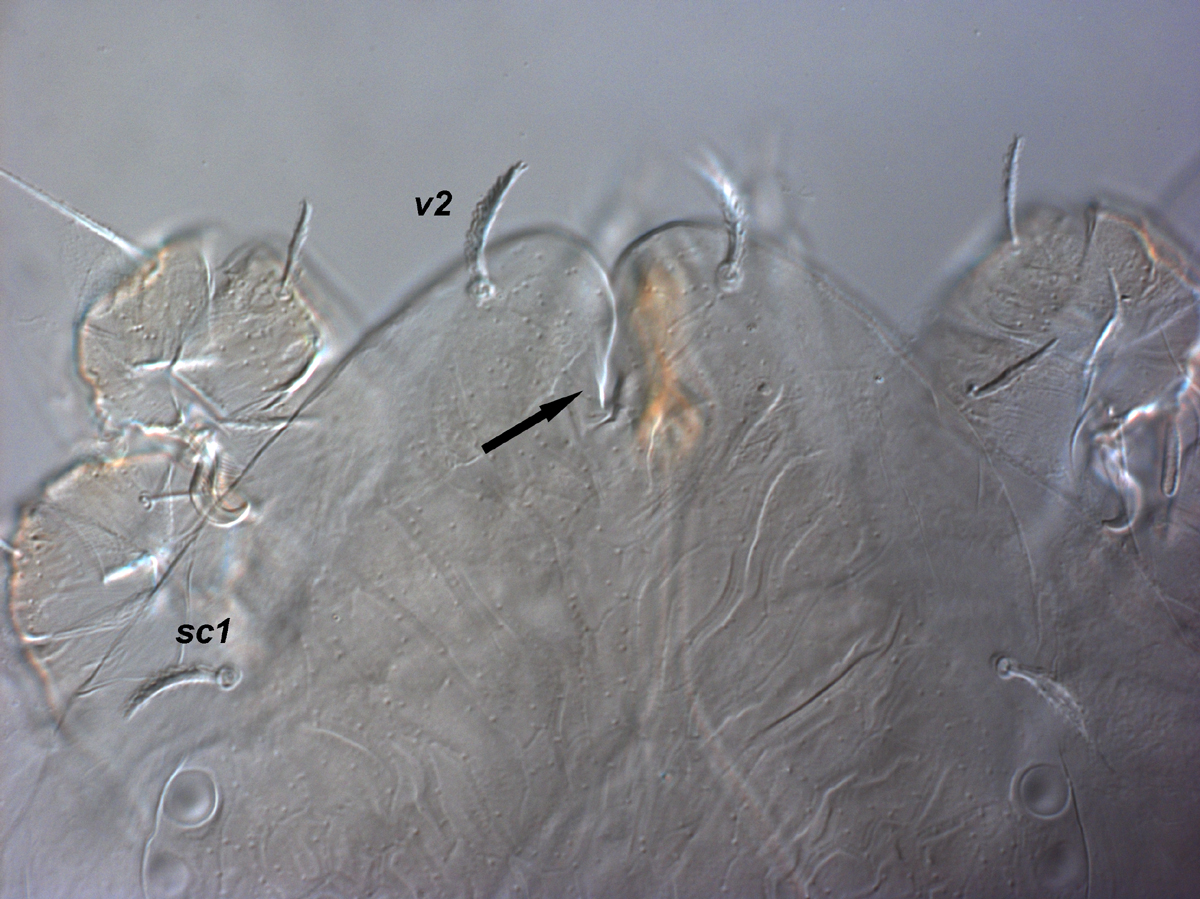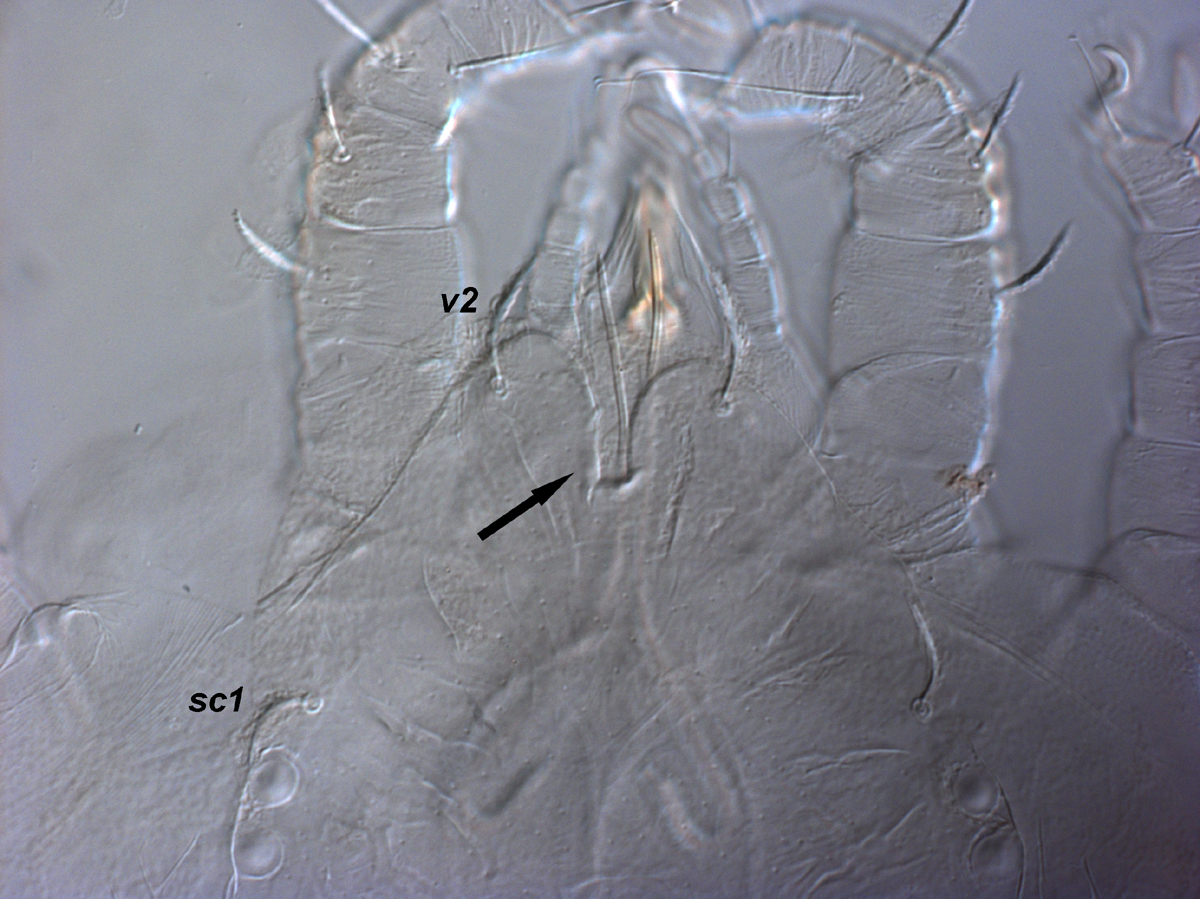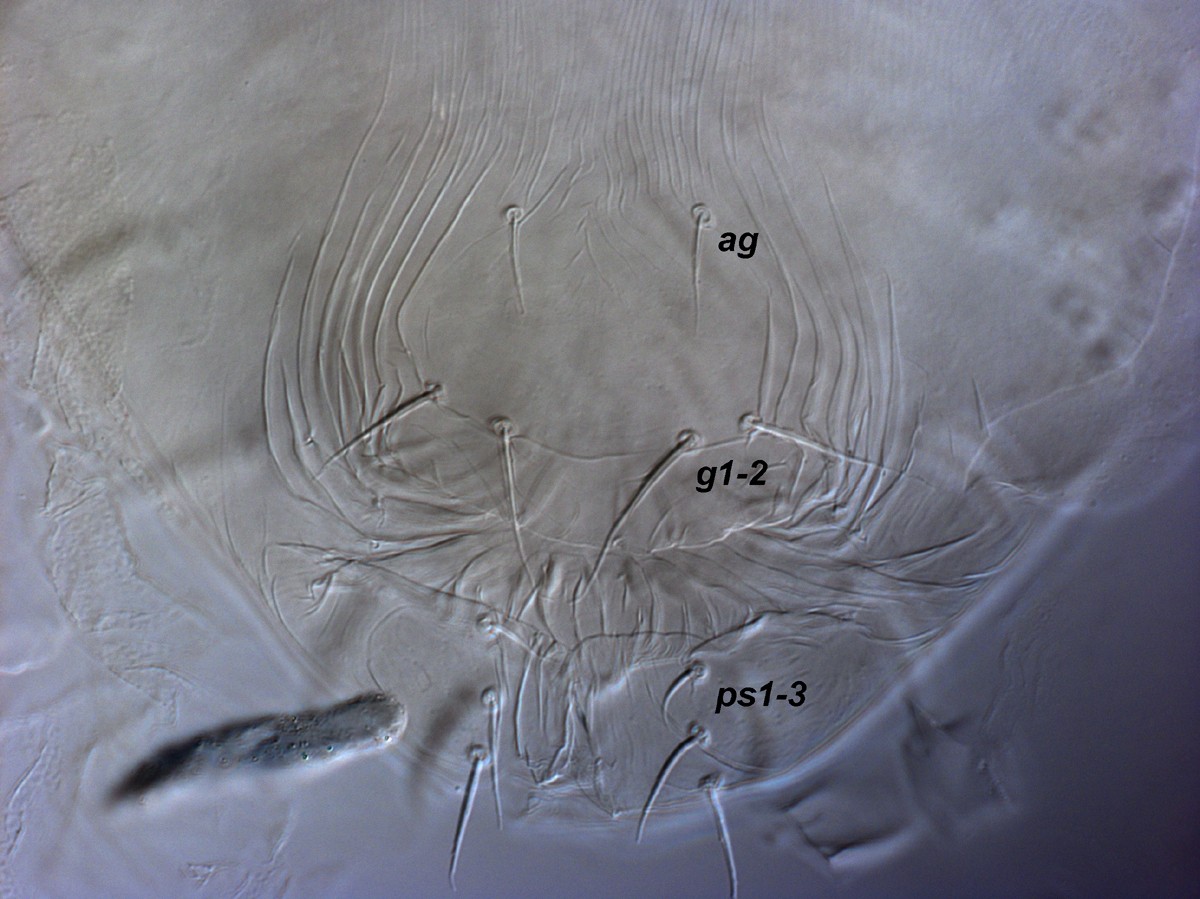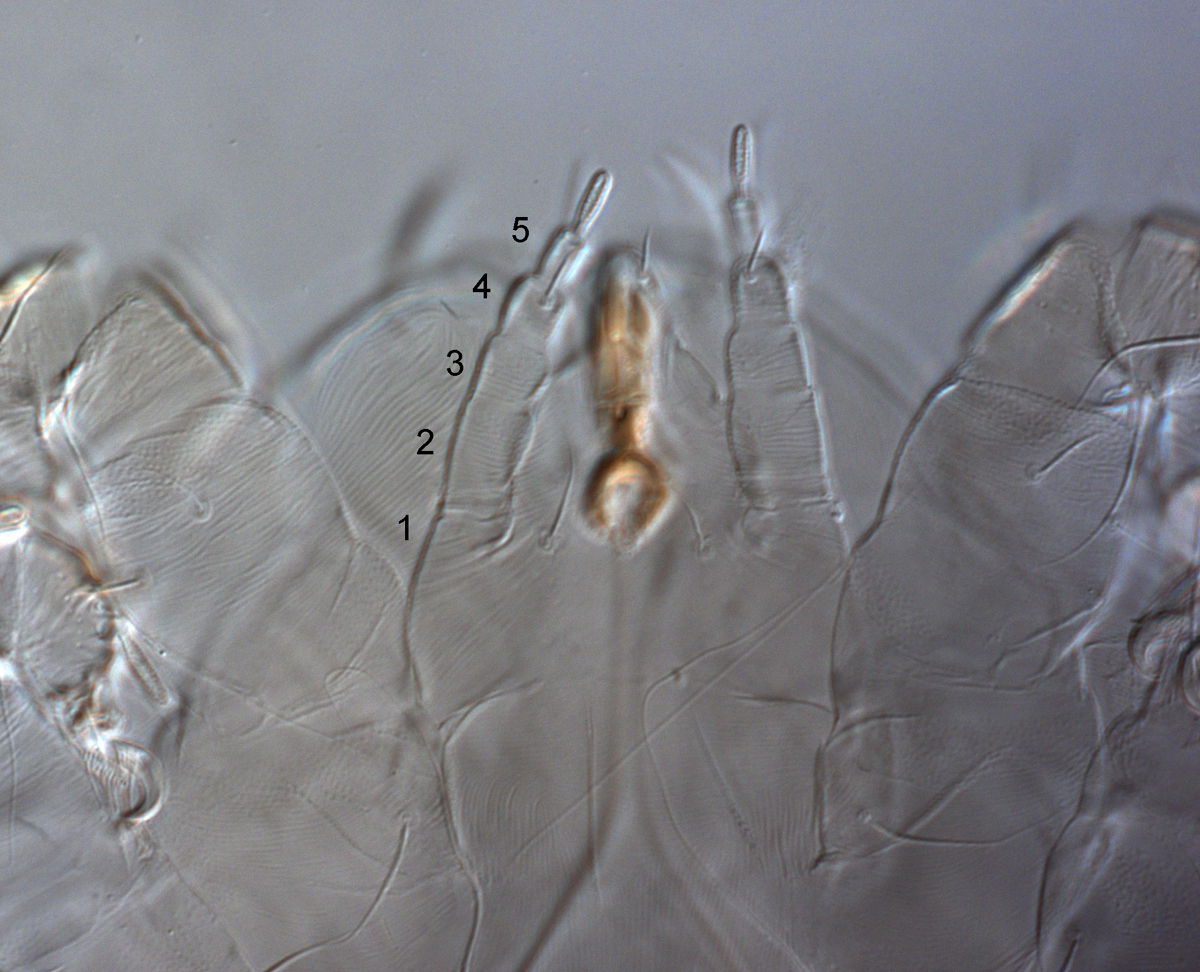Magdalenapalpus
|
Fig. 1. Magdalenapalpus strandtmanni adult female dorsum. |
|
Fig. 2. Magdalenapalpus forsteri sp. nov. Seeman & Beard, adult female a. dorsum, b. detail of palp. |
|
Fig. 3. Magdalenapalpus forsteri sp. nov. Seeman & Beard, adult female anterior margin of prodorsum indicating notch (arrow). |
|
Fig. 4. Magdalenapalpus forsteri sp. nov. Seeman & Beard, adult male anterior margin of prodorsum indicating notch (arrow). |
|
Fig. 5. Magdalenapalpus forsteri sp. nov. Seeman & Beard, adult female posterior venter. |
|
Fig. 6. Magdalenapalpus forsteri sp. nov. Seeman & Beard, ventral gnathosoma indicating details of the palps. |
Key characters
- f2 present or absent (Figs. 1, 2)
- h2
not elongate (Figs. 1, 2) - anterior margin of prodorsum with notch extending to level with or posterior to setae v2 (Figs. 1, 2, 3, 4)
- ventral, genital and anal plates membranous, not well developed (Fig. 5)
- 3 pairs ps setae (Fig. 5)
- 5 segmented palp (Fig. 6)
- claws present
Similar taxa
Aegyptobia - anterior margin of prodorsum with notch anterior to seta v2
Number of species
Three - M. caperatus, M. forsteri, M. strandtmanni
Authority
Mesa, Welbourn and Evans
Distribution
Australia
Hosts
Allocasuarina leuhmannii, A. torulosa, Casuarina equisetifolia (Casuarinaceae)
Colour
- red when alive
- eggs red
Remarks
This is a recently redescribed genus (see Beard, Seeman & Bauchan (2014).

